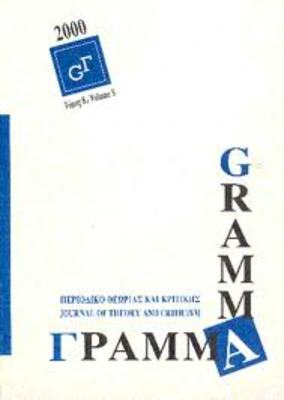The scapegoat in Hardy’s Tragic novels : revisiting ancient theory
Part of : Γράμμα : περιοδικό θεωρίας και κριτικής ; Vol.18, No.1, 2010, pages 81-96
Issue:
Pages:
81-96
Section Title:
The self, the community and nation in 18th and 19th century literature
Author:
Abstract:
Tess d ’Urberville (Tess of the d'Urbervilles) and Eustacia Vye (The Return of the Native) are tragic scapegoats whose function in the diegesis may be revisited in the light of Lacanian psychoanalysis. In the field of our reality, there is always “more than meets the eye, ” because of the exclusion from it of what Lacan has called object small a. Not so in Hardy ’s tragic world, where the vacuity of the perspective is filled by an object which very nearly presentifies the “object-gaze” — one of the forms of object small a. That object is the heroine herself, who is singled out by a red stain and occupies in the visual field the place that should normally be a vacuum. A feminine figure of “unextracted” jouissance, she is a “spot” that comes in excess of reality, a surplus object whose very presence threatens her community with disintegration. Therefore she has to be sacrificed for object small a to be extracted and for the consistency of her community ’s “reality ” to be restored.
Subject:
Subject (LC):
Notes:
Περιέχει βιβλιογραφία, Το άρθρο περιέχεται στο τεύχος Vol.18, No.1, 2010 με τίτλο: The individual and the mass: literary and cultural reflections




